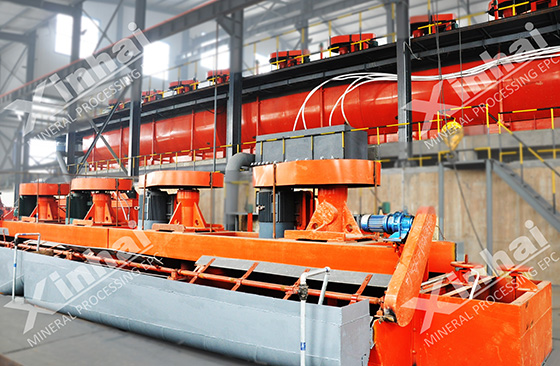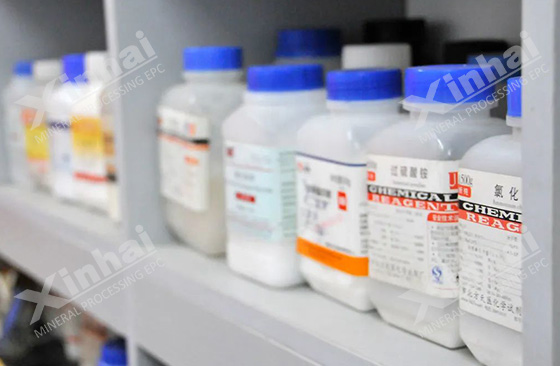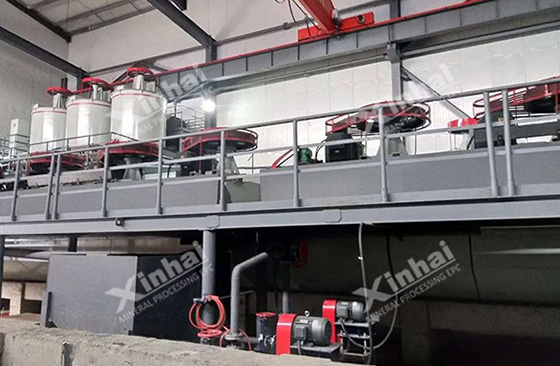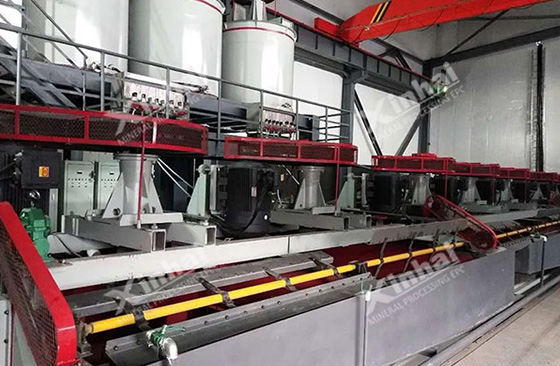
At present, iron ore is mainly poor in fine impurities. It is difficult to obtain the ideal iron concentrate grade using a single beneficiation method. Flotation is often used as the main method, and magnetic separation and gravity separation are assisted to form a combined beneficiation process. Flotation is mainly used to reduce the SiO2 content in the concentrate to improve the grade of iron ore. During the flotation process, flotation reagents need to be used to control the flotation process and improve flotation indicators. Since iron ore gangue is mainly silicate, reverse flotation method is commonly used, and the reagents are mainly reverse flotation reagents. The following article will focus on introducing the iron ore reverse flotation process and commonly used mineral processing reagents.

At present, there are two main methods of iron ore reverse flotation: cation reverse flotation and anion reverse flotation.
Iron ore anion reverse flotation: It has strong adaptability to ores, good selectivity, and easy processing of tailings. However, it has complex chemical system, high chemical cost, sensitivity to temperature, and difficulty in filtering the concentrate.
Cationic reverse flotation of iron ore: Cationic reverse flotation generally allows direct flotation without desliming, and has a simple chemical system, low chemical cost, low temperature resistance, and easy filtration of the concentrate. Industrial production can be achieved at around 10℃ without the need for high-pressure Flotation can be achieved by adjusting the concentration of the slurry, and has strong adaptability to changes in the iron grade of the selected ore. However, it has poor selectivity, sticky foam, sensitivity to sludge, easy environmental pollution, and tailings that are difficult to process.

In the iron ore reverse flotation process, the role of collector is very important. During flotation, combined collectors are often used to complete the flotation operation. Commonly used collectors include anionic flotation collectors and cationic flotation collectors depending on the process.
1. Iron ore anionic reverse flotation collector
Anionic collectors are mostly weak organic acids (or their salts), such as oleic acid, sodium oleate, and products containing a variety of fatty acids extracted from animals, plants, and petroleum processing by-products, such as tar oil (soap), animal Plant fatty acids (soap), naphthenic acid (soap), oxidized paraffin (soap) and their refined products. In the slurry, it is in the molecular or ionic state according to the size of its dissociation constant and the pH value of the medium.
Dodecylamine collector: can effectively collect magnetite and chlorite; the pH range required to collect minerals is related to the concentration of dodecaamine.

Ether diamine collector: better for flotation of coarse and medium-grained quartz
Ether monoamine collector: it has good flotation effect on fine-grained quartz, and when there are fine particles in the system, the flotability of coarse particles will be improved. The presence of fine-grained quartz affects the characteristics of the foam, reducing the size of the foam and improving the stability of the foam.
Etheramine collector: The O(CH2)3 group in the etheramine molecule can improve the solubility of the agent in water, making it easier for the agent to enter the solid-liquid and liquid-gas interfaces, enhancing the elasticity of the liquid film around the bubbles, and improving foaming. performance.
Combination agent of ether amines and alcohols: Due to the co-adsorption of amines and alcohols, a tight adsorption layer can be formed on the surface of iron-containing silicates and iron-containing silicate polymers in the presence of starch, thereby improving the iron-containing Floatability of silicates.
2. Iron ore cationic reverse flotation collector
Cationic collectors mainly include amines, amine derivatives and ammonium salt compounds. The hydrophobic ions that play a collecting role are cations (RNH3+).
Cationic reverse flotation collectors include oleic acid, fatty acids, etc., such as tar oil, animal and plant fatty acids, naphthenic acid, oxidized paraffin soap, etc. In some cases amine molecules act as collectors. Used for flotation of siliceous minerals, it has the characteristics of short interaction time with minerals and good separation effect. In the flotation of silicate minerals, fatty amine collectors are mainly used. However, for silicate gangue minerals, when using cationic collectors for flotation, activation of high-valent metal (iron, calcium, magnesium, aluminum, copper, etc.) cations is required.

The above introduces the iron ore reverse flotation method and the type of collector used in reverse flotation. In the actual mineral processing plant, how to choose the flotation method depends on the properties of the iron ore. Therefore, it is recommended to conduct an ore dressing test analysis first, and based on the analysis result, a suitable iron ore joint beneficiation process method and suitable beneficiation agent types and dosages were designed.
To find out more about our products and solutions, please fill out the form below and one of our experts will get back to you shortly.